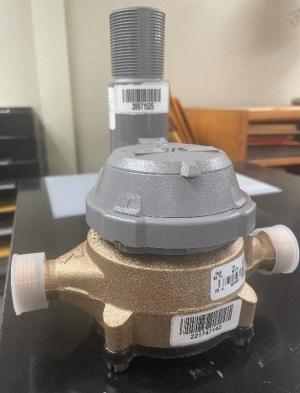-
About Homer
-
- Americans with Disabilities Act Compliance Program City Campgrounds Community Recreation Hickerson Memorial Cemetery
- Library Parks & Trails Public Safety Fire Police Emergency Information
- Events & Activities City Calendar Library Calendar Recreation Calendar Doing Business in Homer Sister City Program Coast Guard City
-
- Departments
- Government
- How Do I?
Troubleshooting for Unusual Water Use
1. Do the “one-hour” test
Your water meter is located inside the building, typically in your crawlspace or basement utility area.
Read all of the numbers on the water meter straight across from left to right and write those numbers down.
Do not use any water on the property for one hour. After an hour has passed, read all of the numbers on the meter again. If the numbers changed, it means that water flowed through the meter and into the property. It is the owner’s responsibility to locate and repair the source of this lost consumption (leak).
2. Do the “all day” (or “all night”) test
Turn off the ice maker and read the meter before you leave for the day (or for the night). Take another meter reading when you return. If the numbers on the meter changed, something (or someone) used water on your property. It is the owner’s responsibility to locate and repair the source of this lost consumption (leak).
3. Do the “food coloring” test
Remove the cover from the tank of the toilet and put enough food coloring in the clear water of the toilet tank to darken the color of the water. Do not flush the toilet for 30 minutes. If the darkened water from the tank moves into the toilet bowl, it indicates that the flapper on the bottom of the toilet tank may need to be replaced. A worn or misaligned flapper can cause a toilet to ‘run’ constantly, which can sometimes be heard by listening closely near the bottom edge of the tank. It also causes the tank to refill automatically every 5 to 20 minutes. A leaky flapper valve can lose up to 200 gallons per hour or more.
4. Do the “water level” test
Remove the cover from the tank of the toilet and look at the long open pipe standing up in the middle of the tank, called the overflow tube. The top of the water level should be about 2 inches below the top edge of this overflow tube. If the water level is up to the top of the overflow tube, water silently slips over the edge of the tube and right on down to the sewer. This will cause the toilet to constantly refill with new water. If you find that the water level is too high, the float mechanism in the tank may need to be adjusted or replaced.
NOTE: It is the property owner's responsibility to locate and repair all sources of lost water consumption (leaks) on the property.
If you need further assistance please contact Homer Public Works at 907-435-3138



